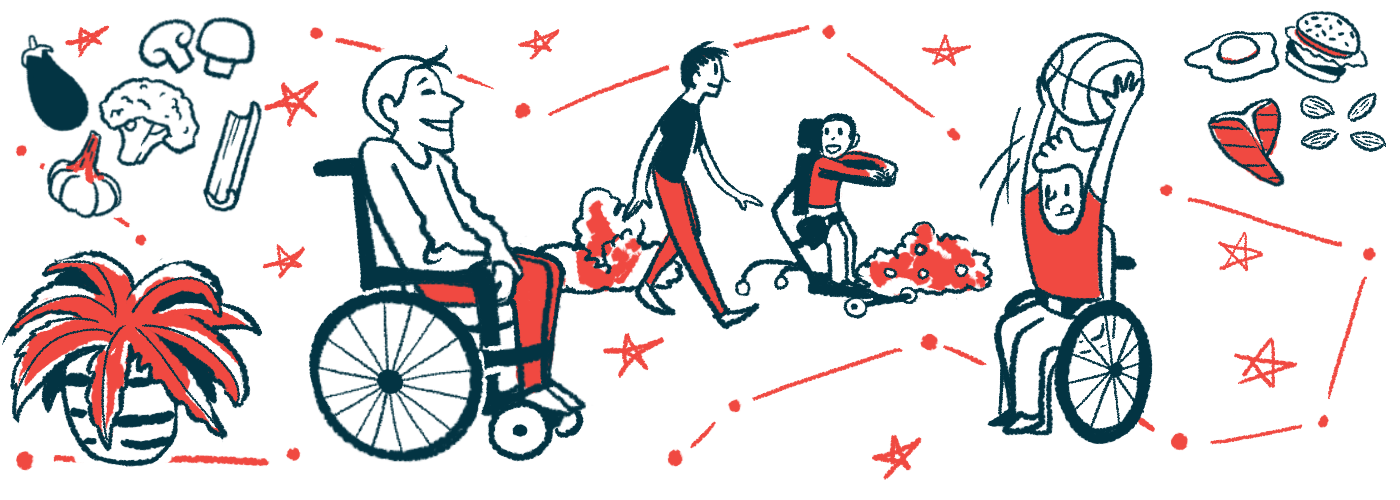Gains in health-related quality of life seen with Spinraza in study
Benefits of approved SMA treatment found for later-onset patients

Treatment with Spinraza (nusinersen) was found to improve psychosocial function — the day-to-day ability to contend with environmental and social tasks — in people with later-onset spinal muscular atrophy (SMA) in a new study of health-related quality of life.
Importantly, patients’ abilities to communicate with their healthcare providers showed improvement while on Spinraza, according to assessments by both the patients themselves and their parents or caregivers.
Data also revealed that the caregivers’ burden was reduced with Spinraza treatment, though their time burden did increase.
Despite significant improvements in clinically assessed motor function, there were no meaningful improvements in physical function as reported by patients and caregivers. According to researchers, this suggested that better motor function was insufficient to improve activities of daily living.
The study, “Impact of nusinersen on the health-related quality of life and caregiver burden of patients with spinal muscular atrophy with symptom onset after age 6 months,” was published in the journal Muscle & Nerve.
Few studies have assessed Spinraza’s effect on health-related qualify of life
Spinraza is a disease-modifying therapy by Biogen that’s approved for all types of SMA — including later-onset forms, defined as cases in which symptoms start after 6 months of age, sometimes as late as in adulthood.
The treatment is designed to increase cells’ ability to produce the SMN protein, which is lacking in people with SMA in various degrees. Its efficacy in improving motor function and survival across a broad spectrum of disease severities has been established in clinical trials enrolling patients with presymptomatic, infantile, and later-onset forms of SMA.
Still, Spinraza’s impact on quality of life has only been examined in small studies with relatively short-term follow-ups.
Sponsored by Biogen, researchers in South Korea now invited 24 patients with later-onset SMA, and also their caregivers, to complete quality-of-life assessments before and during Spinraza treatment. Five patients were diagnosed with SMA type 3, a milder form of the genetic disorder, and 19 had SMA type 2, an intermediate form.
Altogether, 18 patients had completed a sixth Spinraza maintenance dose — treatment is given every four months, or three times each year — meaning they’d been on the therapy for two years.
Among the patients, motor function improved significantly compared with before treatment (baseline), as indicated by higher Hammersmith Functional Motor Scale-Expanded (HFMSE) scores. Benefits were seen across all patients and in both SMA subtype groups.
Health-related quality of life, here called HRQoL for short, was measured using the Pediatric Quality of Life Inventory 4.0 Generic Core Scale (PedsQL GCS), which examines physical, emotional, social, and school functioning in healthy and patient populations.
Assessments were completed in parallel by patients and a parent/caregiver (proxy reported) for children ages 5-18, and by a parent for those ages 2-4.
No gains seen in physical health despite Spinraza treatment
Patient-reported PedsQL GCS total scores and most subscores showed no improvement in HRQoL during the treatment period. Social functioning and psychosocial health subscores fluctuated during treatment but did not increase overall.
In comparison, proxy-reported PedsQL GCS scores by parents or caregivers showed gains both overall and in subscores related to psychosocial health, and emotional, social, and school functioning.
Despite significant HFMSE-defined improvements in motor function with treatment, both the self- and proxy reports showed no change in the PedsQL GCS subscore for physical health.
“This explains that not all items related to physical function in all the questionnaires are sensitive to the subtle changes in motor function in patients with later-onset SMA, particularly those in the chronic stage of the disease,” the researchers wrote.
The Pediatric Quality of Life Inventory 3.0 Neuromuscular Module (PedsQL NMM), specifically devised for children with neuromuscular disorders, also was applied to assess physical health. No changes were observed in self- and proxy PedsQL NMM subscores for “About my neuromuscular disease,” a domain related to the disease process and associated symptoms.
In contrast, significant improvements were found in the “Communication” category for both self- and proxy reports, which decreased initially but later increased. This category assessed patients’ abilities to communicate with healthcare providers and others about their illness.
Similar results were observed with proxy-reported “About our family resources” subscores, with questions related to family financial and social support systems.
Worse health-related quality of life reported by female versus male patients
Subgroup analyses found self- and proxy-reported PedsQL GCS total and physical health subscores were significantly lower (worse) among patients with severe scoliosis — a sideways curvature of the spine common in SMA — and contracture, or tightened muscles, tendons, and joints. Worse subscores also were reported among patients with SMA type 2.
Researchers noted that self-reported psychosocial health subscores were significantly lower among female versus male patients, and in individuals with contracture or SMA type 2.
Overall, contracture, female sex, and SMA type 2 were associated with lower PedsQL NMM scores in most domains of the self-and proxy reports.
Our results suggest that early treatment is essential for improving or stabilizing baseline motor function, which has the potential to have a positive effect on schooling, socialization, and mental health.
Regarding activities of daily living, as measured by 24 caregivers using the Pediatric Evaluation of Disability Inventory Computer Adaptive Test (PEDI-CAT), meaningful improvement occurred in the social-cognitive and responsibility domains. The mobility and daily activities domain scores, however, did not significantly change over time.
Caregiver burden, as assessed with the Assessment of Caregiver Experience with Neuromuscular Disease (ACEND), had a statistically meaningful change with a tendency toward reduced financial burden. In contrast, the burden on time significantly increased during treatment. Caregiver burdens included feeding, grooming, dressing, and mobility, and were significantly changed but not different from the beginning of the study.
Higher HFMSE scores were associated with better health-related quality of life, supported by total PedsQL GCS scores and psychosocial and physical health subscores. SMA type 3 was related to a higher physical health subscore than SMA type 2.
“Our results suggest that early treatment is essential for improving or stabilizing baseline motor function, which has the potential to have a positive effect on schooling, socialization, and mental health,” the researchers concluded, noting, “Further studies with SMA-specific [patient-reported outcome measures] are needed to identify the clinical significance of the functional changes identified by clinician-reported scales.”










